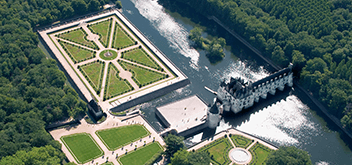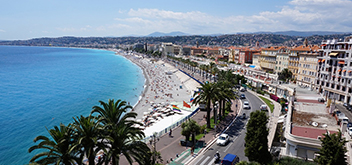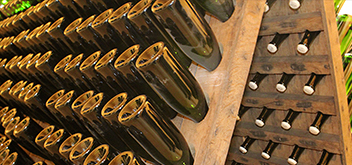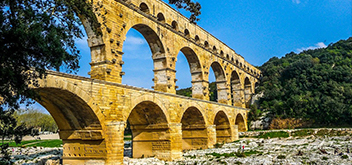No products
Southern Rhône region
This is one of the region of France with the most AOC - appellation controlled origin. Compare to Bordeaux austere wines, côtes-du-rhône are warmer, richer and spicier. Wines of Southern Rhônes are high in alcohol with 14-15%, like one of the most famous appellation: châteauneuf-du-pape (in the area no chaptalisation or extra alcohol from added sugar is allowed)
The southern Rhône reds are easy to appreciate, the alcohol and the openly fruity character of thegrenache grape may help. The grenache is the main grape, concentrated by the low yields because of the stony soils and low rainfall.
While côtes-du-rhône can come from a vast area of around 56,000 ha (140,000 acres) around the southern end of the French Rhône Valley, côtes-du-rhône-villages comes from a restricted area west of châteauneuf-du-pape. Among the hundreds of côtes-du-rhône-villages producers, however, are many with even greater ambitions for their wines, which are made to develop for five and sometimes more years in bottle. With maximum permitted yields a good sixth lower than those allowed for côtes-du-rhône, côtes-du-rhône-villages is one of France's best-value appellations.
Since the appellation was formed in 1966, five of the nearly 20 villages have been granted their own appellations – beaumes-de-venise,gigondas, rasteau, vacqueyras andvinsobres – and the other village names encountered on labels and also marked on the map produce some seriously fine, often underpriced wines.
Châteauneuf-du-pape is the region's most famous and best wine, and all other reds and whites made here apparently use it as their model. This area is famous in wine books as the appellation in which 13 different grape varieties are permitted. In practice, however, the reds are made predominantly from grenache, supplemented by syrah, mourvèdre and less and less with cinsault, while the relatively rare whites are made from a more variable recipe includinggrenache blanc, clairette, bourboulenc androussanne.
Red châteauneuf-du-pape is a big, beefy wine with lots of alcohol and extract. This is one of France's most reliable appellations, except that in some very hot years the wines can be too alcoholic, and in dry years a little too tannic. The fact that so much châteauneuf-du-pape meets a certain minimum standard probably reflects the fact that yields have to be kept remarkably low as well as the mandatory selection of only healthy, ripe grapes.
Gigondas is another reliable wine made, as a red and full rosé, in the image of châteauneuf-du-pape from higher, rockier ground. It costs less and usually tastes rather more rustic, a characteristic which has its own charm. Reliable names include Domaine la Bouïssière, Château de St-Cosme, Les Pallières and Domaine Les Goubert.
Vacqueyras, the other upgraded côtes-du-rhône-village, is not usually quite so dense, but can be very good value.
With the exception of châteauneuf-du-pape, whose regulations are stricter than almost any others in France, wherever red wine is made in southern France, rosé is too, most of it being drunk locally during the hot summer months. The grenache and cinsault of the southern Rhône, with their relatively thin skins and open, fruity flavor are particularly suitable for making pink wine.
The southern Rhône's most famous rosé by far is tavel, made on the right bank of the Rhône and a serious, historic wine in its own right. Just as châteauneuf-du-pape is France's most positive red, tavel across the river is its most powerful pink. This is a wine not for gulping in the garden but as a substantial red wine substitute in hot weather. Chilling is essential.


















